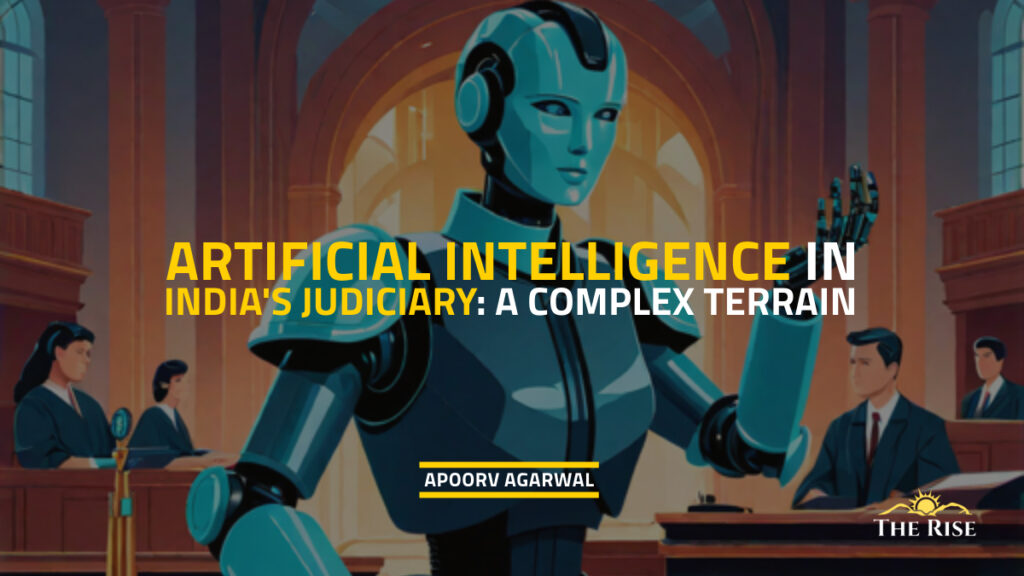The prospect of integrating Artificial Intelligence (AI) into the judicial systems globally holds immense promise, aiming to significantly enhance efficiency and fairness. However, a deeper dive into the practical application of AI within India’s judiciary unveils a complex, multifaceted landscape fraught with unique challenges and considerations that go beyond the oft-discussed themes of bias, ethical dilemmas, and accountability. Drawing on the profound insights from the National Conference on Artificial Intelligence, organized by the Law Commission of India and the Ministry of Electronics and Information Technology—a forum I had the privilege of participating in—this article delves into the less discussed but equally critical aspects of AI’s integration into the judicial domain in India.
Beyond the Surface: Unpacking the Pragmatic Challenges
The Hallucination Hazard and Trust
One of the more unsettling capabilities of AI is its tendency to “hallucinate” – AI’s propensity for generating false information presents a significant barrier to its reliability and the trust legal practitioners and the public can place in AI-assisted decisions. Generating false evidence, inaccurate citations, and incorrect plaint filings. This propensity for error introduces a significant risk of contaminating legal processes with baseless information, thus undermining the justice system’s credibility and reliability.
Ensuring that AI systems are used as a tool rather than a definitive authority is crucial to maintaining the balance between efficiency and the human judgment essential to justice.
The Addiction to AI
The allure of AI’s efficiency and data processing capabilities can lead to an over-reliance on its outputs. This over-reliance, especially without adequate verification mechanisms, could be detrimental if the information is biased, unethical, or hallucinated by AI. Ensuring that AI systems are used as a tool rather than a definitive authority is crucial to maintaining the balance between efficiency and the human judgment essential to justice.
Also Read: Synergizing Progress: Integrating Information Technology for Proactive Project Monitoring
Enormous Data Requirements
The effectiveness of AI is inherently tied to the volume and quality of data it is trained on. Integrating AI into India’s judicial system is significantly challenged by the extensive data requirements. To illustrate, for AI to accurately identify an image of a cat, it needs access to at least 100,000 images. This example highlights the immense data requirements for AI to perform effectively, posing a considerable challenge given the massive amount of data necessary for judicial applications. Despite the National Judicial Data Grid’s efforts, the lack of standardization and digitization significantly hinders AI adoption. The unique styles of judgment writing and reasoning by each judge add another layer of complexity to the standardization process essential for effective AI integration.
Dependence on Manual Data Entry and the National Judicial Data Grid
The reliance on manually fed data into the National Judicial Data Grid, coupled with the absence of court automation, raises concerns about the authenticity and timeliness of data updates. In a system where daily case listings can exceed 100 matters, the potential for inaccuracies without automation is high, affecting the trust in data that underpins AI’s decision-making.
Without careful oversight and mitigation strategies, AI applications in the judiciary could inadvertently perpetuate biases, affecting the fairness and impartiality of legal outcomes.
Infrastructure and Resource Constraints
The infrastructure in lower courts often lacks basic technologies such as OCR readers, and case files are still received in image format rather than more manageable PDFs. With approximately 23,000 courts across India, the logistical and financial hurdles to deploying necessary infrastructure are daunting, exacerbated by bureaucratic red tape. The current gaps in infrastructure not only limit AI’s potential impact but also affect the perception and trust in technology-driven solutions.
The Cost Conundrum
While the Supreme Court’s adoption of AI for live transcribing constitutional matters is commendable, the associated costs—Rs. 75,000 per session—impose an unnecessary financial burden on the court’s budget. There’s a compelling argument for extending such AI applications to lower courts, where the majority of cases originate, to aid appellate courts with transcribed arguments or facilitate the recording of statements under Section 313 of the CrPC. However, this should not be an overnight transformation but a carefully planned and executed application over time.
Expanding the Discourse: Broader Implications of AI Adoption
Workplace and Labour Market Dynamics: The introduction of AI in the judiciary is poised to transform workplace dynamics and labour market trends significantly. The automation of tasks traditionally performed by humans could lead to drastic changes, necessitating a re-evaluation of workforce skills and employment strategies. This transition, while potentially increasing efficiency, also presents challenges related to workforce displacement and the need for skill enhancement.
Also Read: AI Chatbots May Devitalize Ingenuity: Arrival of New Disruptors in Education
Disinformation Distribution: The capability of AI to generate and disseminate disinformation through fabricated news stories, documents, and “deep fake” images and videos presents a formidable challenge to the integrity of information and public discourse. The judiciary, reliant on accurate and trustworthy information, must remain vigilant against the potential misuse of AI, which could undermine the foundation of fair and impartial legal proceedings.
Integration of AI into India’s judicial system necessitates a strategic approach that balances innovation with ethical and legal considerations.
Bias and Inequality Amplification: AI’s potential to develop biases that disadvantage specific groups and amplify existing inequalities is a significant concern. Without careful oversight and mitigation strategies, AI applications in the judiciary could inadvertently perpetuate biases, affecting the fairness and impartiality of legal outcomes. The development of ethical guidelines for AI use and the implementation of bias mitigation strategies are essential steps in addressing these concerns.
Environmental Impact: The environmental footprint of AI systems, attributed to their substantial electricity consumption, which may not always be sourced from renewable energies, is an emerging concern. This aspect necessitates the incorporation of sustainable practices in the broader strategy for AI integration within the judiciary, ensuring that technological advancements do not come at the expense of environmental sustainability.
You May Like: Beyond Books and Bells: Organizational Citizenship Behavior in Higher Education
Moving Forward with Caution and Vision
Moving forward with caution and vision in the integration of AI into India’s judicial system necessitates a strategic approach that balances innovation with ethical and legal considerations. A clear definition of AI is essential for setting regulatory frameworks that ensure accountability. Establishing a cross-border consensus can facilitate the sharing of best practices and standards, enhancing global cooperation. Addressing liability and responsibility is crucial, as it delineates the obligations of AI developers and users within the judiciary, ensuring mechanisms for redress and accountability are in place. Crucially, this journey includes investing in the standardization and digitization of legal data, which is fundamental for AI’s effective application.
Enabling innovation means creating an ecosystem that supports continuous learning, adaptation, and public-private partnerships, fostering an environment where judicial efficiency, access to justice, and the integrity of legal processes are enhanced through AI. This comprehensive strategy must navigate technological potentials and pitfalls with a focus on ethical use, transparency, and sustainability, ensuring AI’s integration serves the broader cause of justice effectively and responsibly.
Disclaimer: The views expressed in this article are of the author solely. TheRise.co.in neither endorses nor is responsible for them. Reproducing this content without permission is prohibited.
Read the PDF version below:
About the author
Prof. Apoorv Agarwal is a faculty of law at Jindal Global Law School, OP Jindal Global University, Sonipat - NCR.








Pingback: Intersection of AI & Copyright: Legal, Ethical Issues - TheRise.co.in